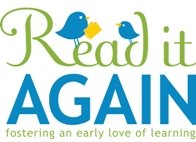FAQs - Teaching Preschoolers How to Read
1. Why do child development experts advise against actively teaching preschoolers to read?
Child development experts suggest avoiding formal reading instruction for preschoolers primarily because many children at this age haven't developed the necessary cognitive skills, particularly phonemic awareness, needed for decoding letters and sounds effectively. Furthermore, prematurely pushing reading can lead to frustration and negative associations with the process, while also taking away time from crucial play-based learning experiences which build foundational skills for later reading success.
2. What are some key developmental factors that make it difficult for preschoolers to learn to read?
One of the most important factors is the lack of developed phonemic awareness, which is the ability to recognize and manipulate individual sounds within words. This is a crucial skill for decoding words while reading. Additionally, the cognitive capacity for abstract thinking and the fine motor skills needed for writing and letter recognition are often still developing at this stage.
3. What are the potential negative impacts of trying to teach a preschooler to read too early?
Pushing a child to read before they are ready can result in frustration, discouragement, and a negative attitude towards reading. It also distracts from the development of other important skills like listening comprehension, vocabulary, expressive language, and the essential learning that comes from play and exploration. This can paradoxically make learning to read later more challenging.
4. What types of activities are more beneficial for preschoolers than formal reading instruction?
Focusing on language skills through conversations, storytelling, and encouraging the use of descriptive language is highly beneficial. Play-based learning that allows for exploration and creativity helps children develop the foundational skills needed for reading later on. Regular read-aloud sessions, where children are exposed to a variety of books, language, and concepts, are also critical.
5. What can parents do to support their preschooler's literacy development without actively teaching them to read?
Parents can read aloud regularly, pointing out letters and words, and discussing how books work. They can also label objects around the house, engage in rich conversations that enhance vocabulary, encourage expressive language, and ask questions to encourage deeper comprehension. Additionally, fostering a love of stories and language through books and conversation promotes important foundational literacy skills.
6. What specific language skills are important to develop during the preschool years that are relevant to reading later on?
Developing listening comprehension, expanding vocabulary, and enhancing expressive language skills are critical. The ability to follow spoken directions, understand complex sentences, use words to communicate effectively and the ability to ask questions to understand the world will build a strong foundation for reading.
7. How can parents recognize when their child might be showing signs of readiness to learn to read?
Signs of readiness include a child's demonstrated interest in letters and words, when they naturally start asking about letter sounds, attempt to "read" on their own, and show they have the phonemic awareness to identify individual sounds in words. They also typically show improved fine motor skills, which is evidenced by their ability to hold a pencil and write basic shapes.
8. What is the recommended approach for teaching a child to read once they show signs of readiness?
When a child demonstrates signs of readiness, a more formal approach that introduces basic phonics, letter sounds, and blending of sounds into words is appropriate. This should be done in a way that makes learning fun and engaging for the child. It's also important to continue reading aloud, providing access to a range of books and continuing to support the development of language skills, and allowing the child to set the pace and engage with reading in a joyful and exploratory way.

